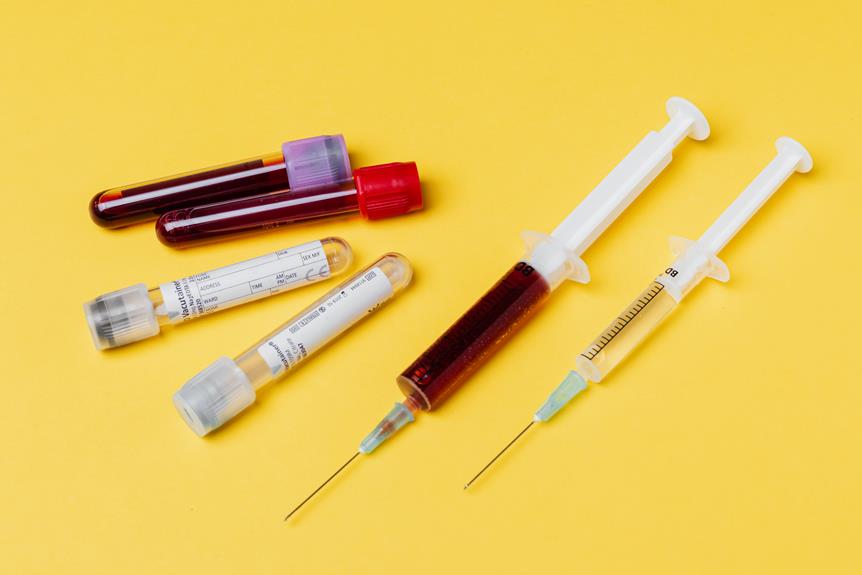Pradaxa
Pradaxa, a widely prescribed blood thinner, reduces stroke and blood clot risks in over 4 million patients globally. This article delves into Pradaxa's medicinal role, usage, and mechanism, as well as its associated side effects. Further, it discusses its efficacy in treating deep vein thrombosis, post-surgery complications, and blood clotting. This comprehensive exploration of Pradaxa aims to guide healthcare professionals in making informed decisions about its application in diverse patient scenarios.

Key Takeaways
- Pradaxa is a prescription blood thinner used to lower the chance of stroke and blood clots.
- Suddenly stopping Pradaxa or missing doses may increase the risk of blood clots or stroke.
- Pradaxa can cause drug interactions with certain medications.
- Serious and sometimes fatal bleeding is a side effect of Pradaxa.
Understanding Pradaxa: An Overview
A significant number of patients worldwide use Pradaxa, a prescription blood thinner, to lower the chance of stroke and blood clots, making it essential to understand its mechanisms, uses, and potential side effects. Uncovering Pradaxa's risks, it's important to note that while it effectively inhibits clotting, it can also lead to severe, sometimes fatal bleeding. Furthermore, abrupt cessation of Pradaxa may increase the risk of stroke. Despite these risks, understanding Pradaxa's benefits is crucial. It is instrumental in reducing stroke chances in patients with non-valvular atrial fibrillation, treating deep vein thrombosis, and pulmonary embolism post initial treatment with injectable blood thinners. It is also prescribed for preventing DVT and PE in patients post hip replacement surgery, demonstrating its multifaceted utility.
The Medicinal Role of Pradaxa
Pradaxa serves as a vital medication in the management and prevention of serious health conditions such as stroke, deep vein thrombosis, and pulmonary embolism. The efficacy of Pradaxa is well-established, with studies showing it to lower the risk of these conditions significantly. Its mechanism of action as a direct thrombin inhibitor contributes to its effectiveness, blocking the formation of blood clots that could potentially lead to life-threatening situations. As with any medication, understanding the safety profile of Pradaxa is essential. Although it can cause side effects, including bleeding, a safety antidote is available to reverse the effect. Overall, the medicinal role of Pradaxa, its efficacy, and safety profile make it a valuable tool in cardiovascular risk management.
Diving Deep Into Pradaxa’s Usage
Over the course of its usage, healthcare professionals and patients alike have found Pradaxa to be an essential medication in preventing and treating serious cardiovascular conditions. Pradaxa's effectiveness in reducing the risk of stroke in different patient populations has become widely recognized. This is achieved by inhibiting thrombin, a blood's central clotting agent, thus lowering the formation of blood clots that can lead to strokes. Moreover, Pradaxa plays a crucial role in preventing deep vein thrombosis and pulmonary embolism, conditions that can pose serious health risks if left untreated. In-depth understanding of Pradaxa's usage can help healthcare providers make informed decisions, maximizing patient safety and improving health outcomes.
Unraveling the Mechanism of Pradaxa
Delving into the intricacies of its function, we begin to unravel the complex mechanism by which Pradaxa achieves its role as a potent anticoagulant. Pradaxa, a direct thrombin inhibitor, hinders the enzyme thrombin, thus preventing the formation of blood clots and subsequently reducing the risk of stroke. This function is particularly beneficial in the case of elderly patients, where Pradaxa's effectiveness has been markedly noted. By reducing the risk of clot formation, Pradaxa also plays a crucial role in diminishing the chance of recurrent blood clots, a common concern in elderly populations. The understanding of this mechanism is not only crucial for its precise application but also forms the basis for potential advancements in its usage, thereby broadening the scope of Pradaxa as an effective anticoagulant.
Side Effects Associated With Pradaxa
While the benefits of Pradaxa are substantial, it is also accompanied by a number of potential side effects, some of which can be serious. The dangers of Pradaxa's side effects range from minor issues like indigestion and stomach pain to severe complications such as unexpected bleeding and liver damage. Hemorrhagic stroke, a serious brain condition caused by bleeding, is also a possibility. It is crucial for patients and healthcare providers to work together in managing Pradaxa's side effects effectively. Regular monitoring of blood parameters and adjusting dosages accordingly can help reduce these risks. Additionally, patients should be educated about the signs of severe side effects and instructed to seek immediate medical attention if they occur.
Interactions of Pradaxa With Other Drugs
Although Pradaxa is effective in preventing blood clots and strokes, it can interact with other medications, potentially altering its efficacy or increasing the risk of adverse effects. These drug interactions can occur with prescriptions, over-the-counter medications, vitamins, and herbal supplements. Specific drugs that may interact with Pradaxa include antifungal agents, antiretrovirals, and certain antidepressants. These interactions can enhance the anticoagulant effect of Pradaxa, increasing the possibility of bleeding. Conversely, some drugs can reduce its effect, raising the potential risks of blood clots or stroke. Therefore, patients should provide their healthcare provider with a comprehensive list of all medications they are taking, ensuring safe and effective use of Pradaxa.
The Risk of Abruptly Stopping Pradaxa
Patients who are prescribed Pradaxa should be aware of the potential risks and complications that come with abruptly discontinuing the medication, and they must consult with their healthcare provider before making any changes. The importance of consistent Pradaxa dosing cannot be overstated. An irregular dosing schedule increases the risk of blood clots or stroke, conditions that Pradaxa is designed to mitigate. Conversely, taking more than the prescribed dose can lead to a Pradaxa overdose, which may result in uncontrolled bleeding, a serious complication. In both scenarios, the patient's health is put at risk, emphasizing the need for consistent, appropriate use of the medication. Therefore, any changes to the dosing regimen should be done under the supervision of a healthcare provider.
FDA Approval of Pradaxa Bleeding Antidote
In April 2018, the U.S. Food and Drug Administration (FDA) granted approval for a Pradaxa bleeding antidote, providing a crucial safety net for patients experiencing serious or uncontrolled bleeding while on this blood-thinning medication. This antidote, known as Praxbind, acts as a reversal agent for Pradaxa, quickly stopping its blood-thinning effect. The Pradaxa bleeding risks can be serious, and prior to the antidote's availability, treatment options were limited. The introduction of Praxbind marked a significant development in patient safety. The Pradaxa antidote availability has since given both patients and healthcare providers reassurance, knowing that the effects of Pradaxa can be swiftly countered in emergency situations, thus decreasing the potential for fatal bleeding complications.
Exploring Alternatives to Pradaxa
While Pradaxa serves as an effective medication for blood clot prevention, it is essential to explore alternative treatments that may offer similar benefits with potentially fewer risks. Exploring natural alternatives, such as dietary changes and regular exercise, can contribute to improved blood health. Some patients might benefit from incorporating foods rich in omega-3 fatty acids, which have been suggested to naturally thin the blood. Engaging in regular physical activity can also promote healthy blood circulation. Clinical trials for new alternatives are continuously conducted, with the aim of developing safer, more efficient medications. As our understanding of blood clot prevention expands, the medical community remains committed to finding the most effective, least risky treatments for each individual patient.
Pradaxa in the Treatment of Atrial Fibrillation
For those suffering from atrial fibrillation, Pradaxa serves as a crucial medication aimed at reducing the risk of stroke and blood clots. This potentially life-saving treatment significantly influences the patients' quality of life by offering a sense of security against serious health risks. The dosing and administration guidelines for Pradaxa are straightforward, and it is typically prescribed at a dosage of 150mg, taken orally twice daily. Adherence to these guidelines is vital for the medication to effectively prevent the formation of harmful clots. Patients should be aware of the importance of taking Pradaxa consistently to maintain therapeutic levels of the drug in their system. Therefore, Pradaxa not only mitigates medical complications associated with atrial fibrillation but also contributes positively to patients' overall well-being.
Role of Pradaxa in Preventing Stroke
Pradaxa, as a potent anticoagulant, plays a vital role in stroke prevention, and it operates by inhibiting the formation of blood clots that could potentially obstruct blood flow to the brain. Studies have demonstrated Pradaxa's effectiveness in reducing stroke risk, particularly in patients with atrial fibrillation. This is due to its ability to directly inhibit thrombin, a key enzyme involved in clot formation. When conducting a comparative analysis of Pradaxa with other blood thinners such as warfarin, Pradaxa has been shown to have a similar or superior efficacy in stroke prevention, with a comparable or decreased risk of bleeding. It can be concluded that Pradaxa is a valuable therapeutic option for patients requiring anticoagulation therapy for stroke prevention.
Pradaxa: A Solution to Deep Vein Thrombosis
In the vast majority of cases, Pradaxa has been found to be an effective solution for the treatment and prevention of deep vein thrombosis. The data consistently demonstrate Pradaxa's effectiveness in inhibiting the formation of blood clots, making it a leading choice for those prone to this condition. Notably, Pradaxa reduces the risk of clotting by blocking thrombin, a key agent in blood coagulation. While providing substantial health benefits, Pradaxa also prioritizes patient safety. Although potential side effects exist, such as bleeding risks, careful monitoring and adherence to dosage instructions can mitigate these concerns. The overall patient safety profile of Pradaxa, combined with its proven effectiveness, positions this medication as a reliable solution for managing deep vein thrombosis.
Pradaxa for Post-Surgery Patients
After undergoing surgical procedures, particularly hip replacement operations, patients are commonly prescribed Pradaxa to prevent the occurrence of deep vein thrombosis and pulmonary embolism. The Pradaxa dosage typically depends on the patient's medical condition and response to treatment. The drug's efficiency in blood clot prevention is often compared to that of Warfarin, another anticoagulant. In terms of efficacy, studies have found Pradaxa to be as effective as Warfarin, but with fewer dietary restrictions and no requirement for regular blood monitoring. However, these benefits need to be weighed against potential risks, as Pradaxa, like Warfarin, carries a risk of severe bleeding. Always consult with a healthcare provider to determine the most appropriate anticoagulant treatment post-surgery.
Pradaxa and Its Impact on Blood Clots
As we delve into the topic of Pradaxa and its impact on blood clots, it's crucial to understand how this medication actively prevents the formation of potentially harmful clots in the blood. Pradaxa's impact on cardiovascular health is significant, as it functions by inhibiting thrombin, a key clotting agent, thus reducing the risk of stroke or thromboembolic events. However, while effective in preventing blood clots, Pradaxa also carries an increased risk of bleeding. It's essential that physicians closely monitor their patients to balance the benefits of clot prevention with pradaxa and its effect on bleeding risk. Ultimately, the consistent use of Pradaxa can bring substantial benefits to those at risk of blood clot formation, provided that its application is carefully managed.
The Future of Blood Thinners: Beyond Pradaxa
Blood thinners, including Pradaxa, have revolutionized cardiovascular treatment, and the future promises even more advancements in this field. As research continues, the focus is on precision medicine, where therapies will be individually tailored to a patient's genetic makeup and health status. Future advancements are likely to include safer alternatives with fewer side effects and lower bleeding risks. New developments are also expected to enhance patient convenience by reducing the frequency of dosage without compromising the efficacy. Furthermore, the advent of artificial intelligence and machine learning in healthcare might predict individual patient response to these medications, paving the way for personalized blood thinner treatments. Thus, the future of blood thinners goes beyond Pradaxa, holding immense potential for improved cardiovascular care.
Frequently Asked Questions
What Precautions Should Be Taken When Using Pradaxa for Elderly Patients?
When considering any medication for elderly patients, precautions should be taken. Dosage adjustments may be necessary due to changes in metabolism and organ function that come with aging. Additionally, the potential for medication interactions should be carefully assessed, as older adults often take multiple prescriptions. It's crucial to monitor these patients closely to ensure safety and efficacy of the treatment, and to mitigate any potential adverse effects.
How Does Pradaxa Compare With Other Blood Thinners in Terms of Efficacy and Safety?
When comparing blood thinners in terms of efficacy and safety, several factors come into play. These include, but are not limited to, cost-effectiveness, potential interactions with other medications, and the risk-benefit profile. A comprehensive cost analysis and thorough interaction studies should be conducted for an accurate comparison. Key elements to consider are the medication's performance in reducing the risk of stroke and blood clots, and its safety profile, specifically, its propensity to cause serious bleeding.
Can Pradaxa Be Used in Patients With Kidney or Liver Disease?
When considering the use of blood thinners in patients with kidney or liver disease, physicians must exercise caution due to potential drug interactions and side effects. Dosage adjustment is often necessary to ensure safety and efficacy. Additionally, dietary restrictions may be implemented to avoid foods that could interfere with the medication's performance. This careful management is crucial to prevent complications and optimize therapeutic outcomes in patients with these conditions.
What Are the Signs of Overdose With Pradaxa and What Steps Should Be Taken in Such Cases?
Overdose symptoms may include unusual bleeding or bruising, pink or brown urine, and frequent nosebleeds. In such instances, immediate medical attention is required. Pradaxa interactions with other medications can increase the risk of overdose, hence, it's crucial to discuss all medications with your healthcare provider. Pradaxa storage conditions, specifically at room temperature, away from moisture and heat, can help maintain its efficacy and reduce the risk of accidental overdose.
Can Pradaxa Be Used During Pregnancy or Breastfeeding?
When the chips are down, the question of medication use during pregnancy or breastfeeding is of paramount importance. Assessing Pradaxa's impact on fetal development and hormonal interactions is essential. Limited studies suggest potential risk to the fetus, hence, it's generally advised to avoid Pradaxa during pregnancy. Similarly, breastfeeding while on Pradaxa is not recommended as it's unknown if the drug passes into breast milk. Always consult your healthcare provider for personalized advice.
Conclusion
In conclusion, Pradaxa serves a critical role in mitigating stroke and clot risks for patients with conditions such as atrial fibrillation and post-surgery complications. However, its usage requires careful administration and monitoring due to potential side effects and drug interactions.

This post has been generated by AI and was not reviewed by editors. This is Not legal advice. Please consult with an attorney.




